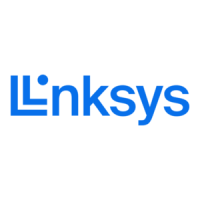
Do you have a question about the Linksys SRW208MP and is the answer not in the manual?
| Power over Ethernet (PoE) | Yes |
|---|---|
| Switching Capacity | 16 Gbps |
| Forwarding Rate | 11.9 Mpps |
| MAC Address Table | 8K entries |
| Jumbo Frame Support | 9KB |
| Power Supply | Internal |
| Ports | 8 x 10/100/1000 Mbps RJ45 |
| SFP Slots | 2 SFP slots |
| VLAN Support | Yes |
| Quality of Service (QoS) | Yes, 4 queues per port |
| Management | Web-based, SNMP |
| Security Features | Port security |
| Dimensions | 11.02 x 1.73 x 6.69 in |
| Operating Temperature | 0 to 45°C (32 to 113°F) |
| Operating Humidity | 10% to 85% non-condensing |
Introduction to the user guide and product overview.
Details the content and structure of the user guide.
General description of the switch's differences and features.
Details the front panel components and LEDs of the SRW208 model.
Details the front panel components and LEDs of the SRW208G model.
Details the front panel components and LEDs of the SRW208L model.
Details the front panel components and LEDs of SRW208P/MP models.
Description of the switch's back panel connectors and ports.
Explains how to connect network devices to the switch.
Guidelines for selecting a suitable location for the switch.
Instructions for desktop and rack-mount switch installation.
Step-by-step guide to connecting network devices and power.
Introduction to the switch's menu-driven console interface.
Steps to set up HyperTerminal for console connection.
Procedure for establishing a Telnet connection to the switch.
Navigating and using the switch's console menus for configuration.
Introduction to the switch's web-based configuration utility.
Instructions for accessing the web interface and initial login.
Displays device and system information.
Configuration of system name, IP address, and default gateway.
Settings for configuring the switch's time and date.
Configuration of individual port parameters like speed, duplex, and status.
Configuration for combining multiple ports into a single logical link.
Configuration for Link Aggregation Control Protocol (LACP).
Management of Power over Ethernet settings for supported ports.
Creating and configuring Virtual Local Area Networks (VLANs).
Configuring port modes and VLAN membership.
Assigning ports to specific VLANs and configuring their membership.
Mapping VLANs to specific ports and defining their mode.
Configuration for GARP VLAN Registration Protocol for automated VLAN distribution.
Viewing device utilization and error statistics using RMON.
Collecting and viewing historical network statistics.
Configuring network alarms based on thresholds for monitoring.
Defining and managing RMON events for network monitoring.
Monitoring the resource consumption of network ports.
Viewing statistics related to 802.1x authentication.
Viewing statistics related to GVRP for VLAN management.
Defining and managing Access Control Lists based on IP addresses.
Defining and managing Access Control Lists based on MAC addresses.
Applying defined ACLs to network interfaces.
Configuring RADIUS server for centralized network authentication.
Configuring TACACS+ server for centralized network authentication.
Enabling and configuring 802.1x port-based authentication.
Enhancing security by limiting port access to specific MAC addresses.
Configuring advanced port-based authentication for multiple hosts.
Managing network traffic to prevent broadcast, multicast, and unicast storms.
Configuring Class of Service (CoS) for Layer 2 traffic prioritization.
Defining QoS queue forwarding types and priority mapping.
Mapping Differentiated Services Code Point (DSCP) values to queues.
Defining bandwidth settings for egress interfaces and rate limiting.
Configuring QoS in basic mode, including trust mode settings.
Configuring advanced QoS rules for flow classification and bandwidth management.
Displays the current Spanning Tree Protocol (STP) status on the device.
Configures global STP parameters like mode and BPDU handling.
Assigns STP settings to specific interfaces and displays port states.
Configures Rapid Spanning Tree Protocol (RSTP) settings for ports.
Defines global MSTP settings including region names and revisions.
Maps VLANs to STP instances and configures instance settings.
Configures MSTP settings for specific interfaces.
Details on Gigabit Ethernet speeds and integration into networks.
Explanation of fiber optic cable types, connectors, and usage.
Instructions on enabling TCP/IP for network communication.
Guide to sharing printers, folders, and files over a network.
How to view and add PCs to your network.
Steps to enter the startup menu and download software using Xmodem.
Technical specifications for the SRW208 model.
Technical specifications for the SRW208G model.
Technical specifications for the SRW208L model.
Technical specifications for the SRW208MP model.
Technical specifications for the SRW208P model.
Details the limited warranty terms and conditions for Linksys products.
Compliance statement for FCC rules regarding digital devices.
Important safety precautions for product usage.
Regulatory compliance statement for Industry Canada.
Statement regarding device interference and acceptance.
Provides online resources and contact details for Linksys support.